Big news indeed:)
23.07.2025 11:02 — 👍 1 🔁 0 💬 0 📌 0Peter Donhauser
@pwdonh.bsky.social
Cognitive Neuroscience Researcher | Speech & Audition | MEG Frankfurt, Germany https://scholar.google.com/citations?user=276f1C0AAAAJ
@pwdonh.bsky.social
Cognitive Neuroscience Researcher | Speech & Audition | MEG Frankfurt, Germany https://scholar.google.com/citations?user=276f1C0AAAAJ
Big news indeed:)
23.07.2025 11:02 — 👍 1 🔁 0 💬 0 📌 0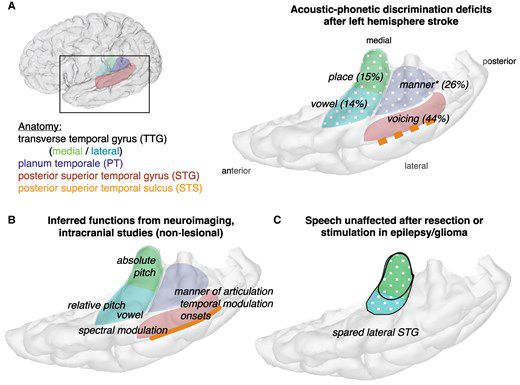
This was an interesting commentary to write on work by Binder et al. regarding impaired acoustic phonetic perception after unilateral left hemisphere stroke. academic.oup.com/brain/advanc...
19.03.2025 18:23 — 👍 15 🔁 3 💬 1 📌 0documentary with a brief appearance of my PI arguing for basic shared values. the past few months here have been highly strange... (example: how to conduct lab meetings when your PI is not allowed to enter the building? 😶🌫️)
www.youtube.com/watch?v=n5nE...
Please repost to get the word out! @nkgarg.bsky.social and I are excited to present a personalized feed for academics! It shows posts about papers from accounts you’re following bsky.app/profile/pape...
10.03.2025 15:12 — 👍 118 🔁 80 💬 6 📌 11
People talk a lot about objects, but what about the softness of a cushion, the greenness of an emerald, or the viscosity of oil? In our work just published @pnas.org, we shed light on how we make sense of the hundreds of materials around us.
www.pnas.org/doi/10.1073/...
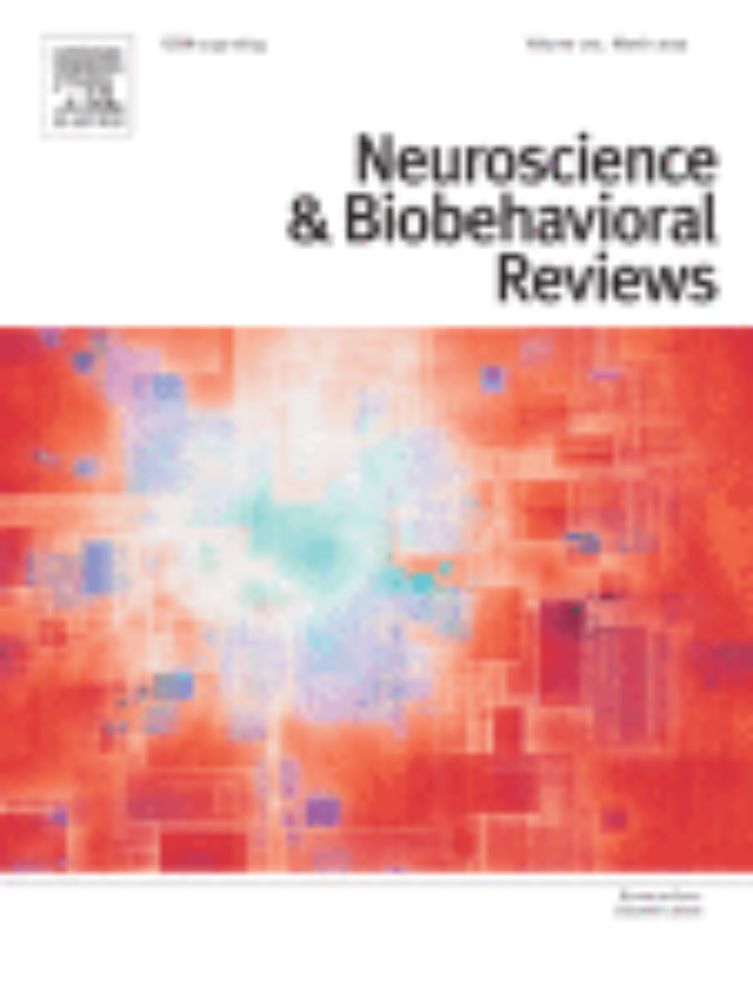
20+ years ago, an idea about cortical lateralization of audition was advanced: asymmetric sampling in time (AST). This extensive review/reevaluation by Chantal Oderbolz, me, and Martin Meyer assesses how the idea has fared. #notallwrong
www.sciencedirect.com/science/arti...
One week left to apply!
We'll have so much exciting data for projects: for example, neuropixel data from humans while they listen to sentences courtesy of @shaileejain.bsky.social, Eddie Chang, and his group.
I feel like you're already missing a spotlight here by not providing a link to your paper:)
14.02.2025 14:05 — 👍 2 🔁 0 💬 1 📌 0
"Key attributes of successful research institutes" journals.plos.org/plosbiology/... – well-written perspective on what makes research institutes successful. having a lot of resources is not sufficient, if there is no positive research culture or good governance structure.
11.02.2025 08:55 — 👍 15 🔁 2 💬 1 📌 0C, on all dimensions.
06.02.2025 17:48 — 👍 1 🔁 0 💬 0 📌 0#PsychSciSky #neuroskyence
06.02.2025 15:46 — 👍 0 🔁 0 💬 0 📌 0Thanks to @davidpoeppel.bsky.social and the members of the Poeppel lab for their support and feedback on this work.
06.02.2025 15:46 — 👍 0 🔁 0 💬 1 📌 0
We demonstrate the approach on a dataset collected using a speaker odd-one-out task, where we show that people’s first language can shape how they perceive continuous and categorical aspects of accents.
06.02.2025 15:46 — 👍 1 🔁 1 💬 1 📌 0Item-level fitting, on the other hand, provides an estimate of the information present in the data that is not accounted for by prior knowledge and remains to be explained. We can use the fitted models for exploration and hypothesis generation.
06.02.2025 15:46 — 👍 1 🔁 1 💬 1 📌 0
(Q2) However, we show in simulations how to incorporate design matrices in the model fit. This allows us to quantify how well participants' odd-one-out choices can be explained using prior knowledge (here: stimulus categories).
06.02.2025 15:46 — 👍 1 🔁 1 💬 1 📌 0Both the stimulus feature space and individual rater weights are optimized in a combined procedure using backpropagation. The model can be fitted without taking prior knowledge into account.
06.02.2025 15:46 — 👍 0 🔁 0 💬 1 📌 0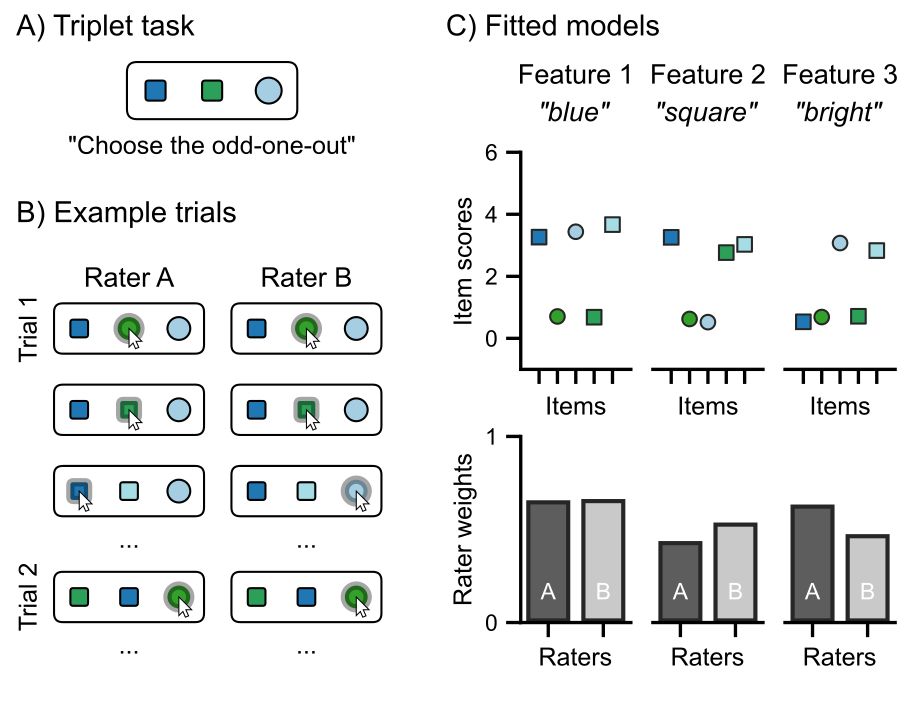
(Q1) In this task, human raters have to choose the odd-one-out in a triplet of 3 stimuli. In this simulated example two raters disagree on 1 triplet. Our approach assumes a common feature space that describes stimuli, but raters can weigh features differently in their choices.
06.02.2025 15:46 — 👍 1 🔁 1 💬 1 📌 0The approach we propose is based on the odd-one-out task, which was used by @martinhebart.bsky.social to reveal dimensions of object representation.
06.02.2025 15:46 — 👍 0 🔁 0 💬 1 📌 0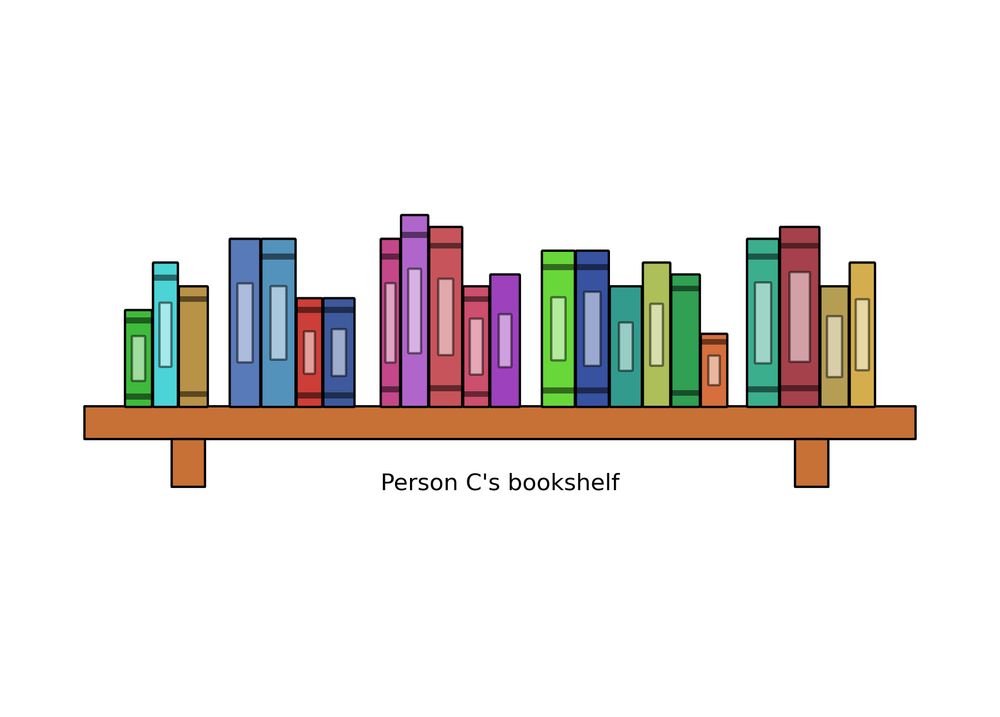
A bookshelf. The books are not arranged in an apparent order.
(Q2) Sometimes the features underlying people’s similarity judgments are not obvious. How can we combine prior knowledge about stimulus domains with data-driven approaches to gain new insights?
06.02.2025 15:46 — 👍 1 🔁 1 💬 1 📌 0
two bookshelves: in one of them the books are sorted by size, in the other they are sorted by color.
In a new preprint with @kleind.bsky.social, we ask two questions: (Q1) People differ in how they perceive the similarity of stimuli in their environment. How can we model the features underlying similarity judgments in arbitrary domains, while accounting for individual differences? osf.io/agpb5_v1 🧵
06.02.2025 15:46 — 👍 20 🔁 7 💬 1 📌 1Mu-rhythm in slow motion?
30.01.2025 10:32 — 👍 0 🔁 0 💬 1 📌 0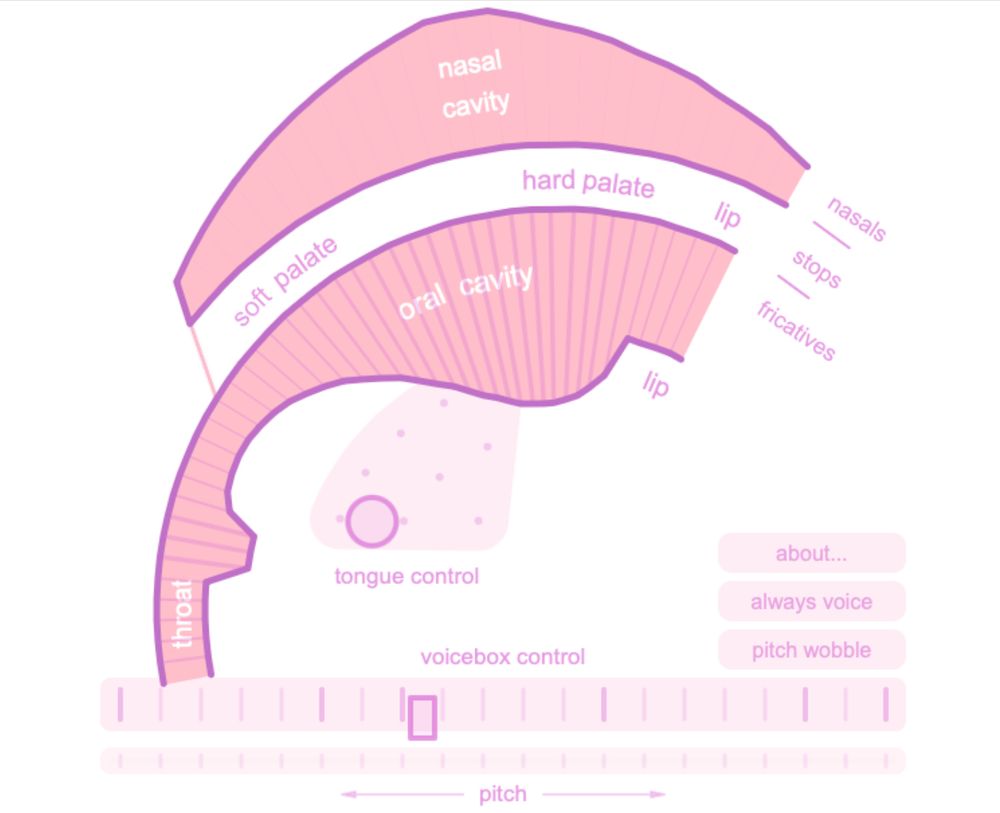
A picture of a pink cartoon mouth with a nasal cavity, oral cavity, sort palate, hard palate, lip, and tongue
When teaching about speech production (which I'm doing today) I always enjoy this Pink Trombone demo
Also: If you really really really hate someone show this to their kids
dood.al/pinktrombone/
Best-of
20.12.2024 17:56 — 👍 4 🔁 0 💬 0 📌 0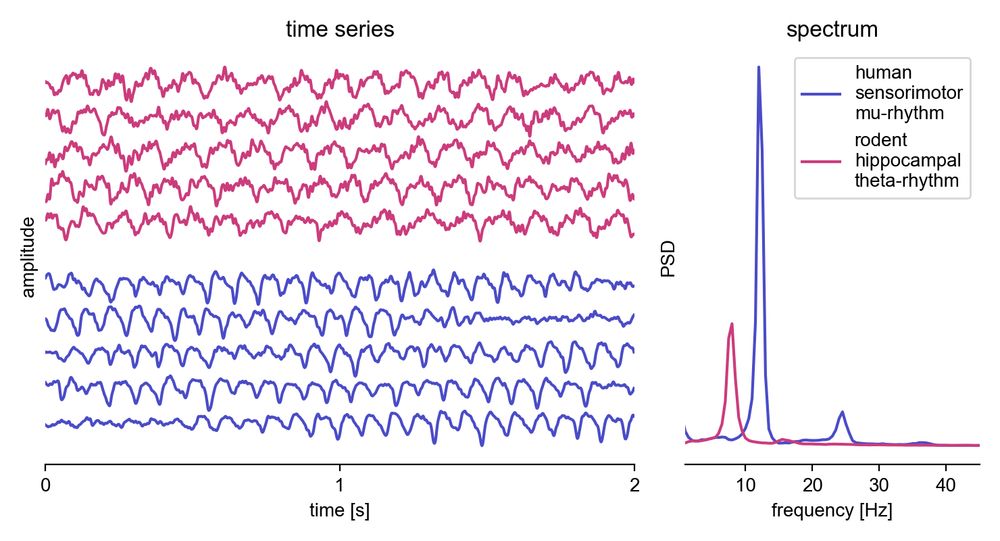
time series and spectra of human and rodent electrophysiological data
comparing human & animal brain rhythms: it's easy to find examples where human rhythms are more pronounced than anything you can see in animals, even the famous theta-rhythm. 🙂
as evident by the higher spectral peak. 📉 (this is after adjusting for a difference in absolute signal amplitude)
You should send a letter with this story to your old address
19.12.2024 21:13 — 👍 2 🔁 0 💬 1 📌 0We've launched a jsPsych newsletter 📬
16.12.2024 17:58 — 👍 4 🔁 3 💬 0 📌 0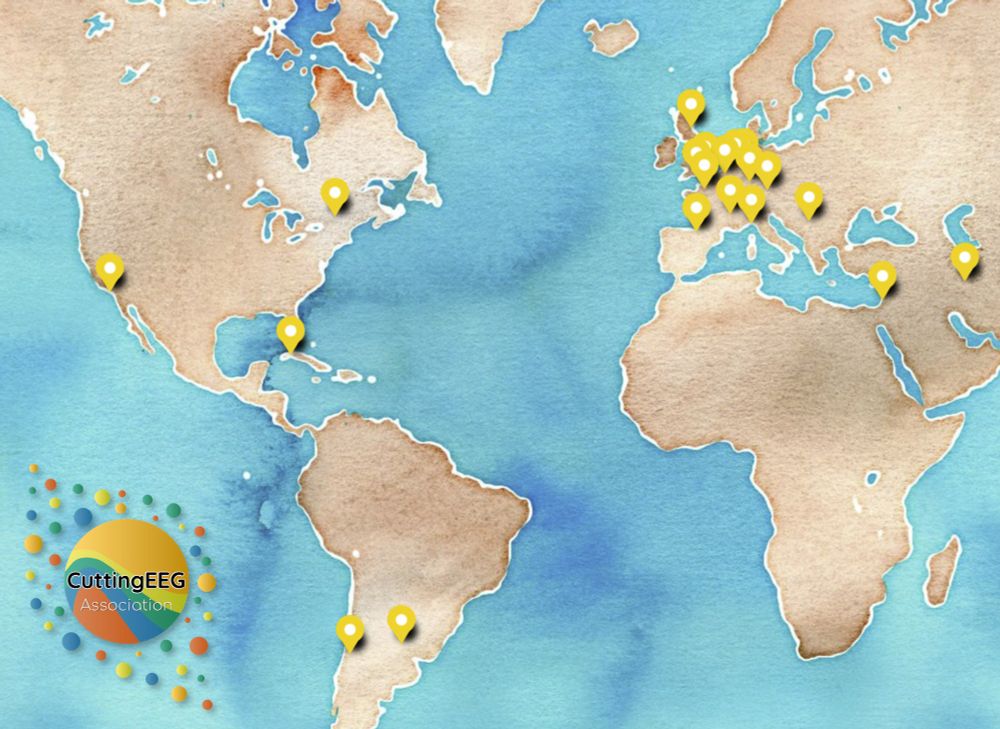
🚀 Excited to share our preprint! 🌍 "Doing conferences differently: decentralising for ecological and social sustainability" highlights #CuttingGardens 2023, the multi-hub conference #CuttingEEG designed to reduce carbon emissions and enhance inclusivity in international events.
13.12.2024 10:01 — 👍 13 🔁 5 💬 1 📌 1#PsychSciSky
13.12.2024 14:57 — 👍 1 🔁 0 💬 0 📌 0More work coming soon on how to model features underlying these rater judgments.
13.12.2024 14:57 — 👍 2 🔁 0 💬 1 📌 0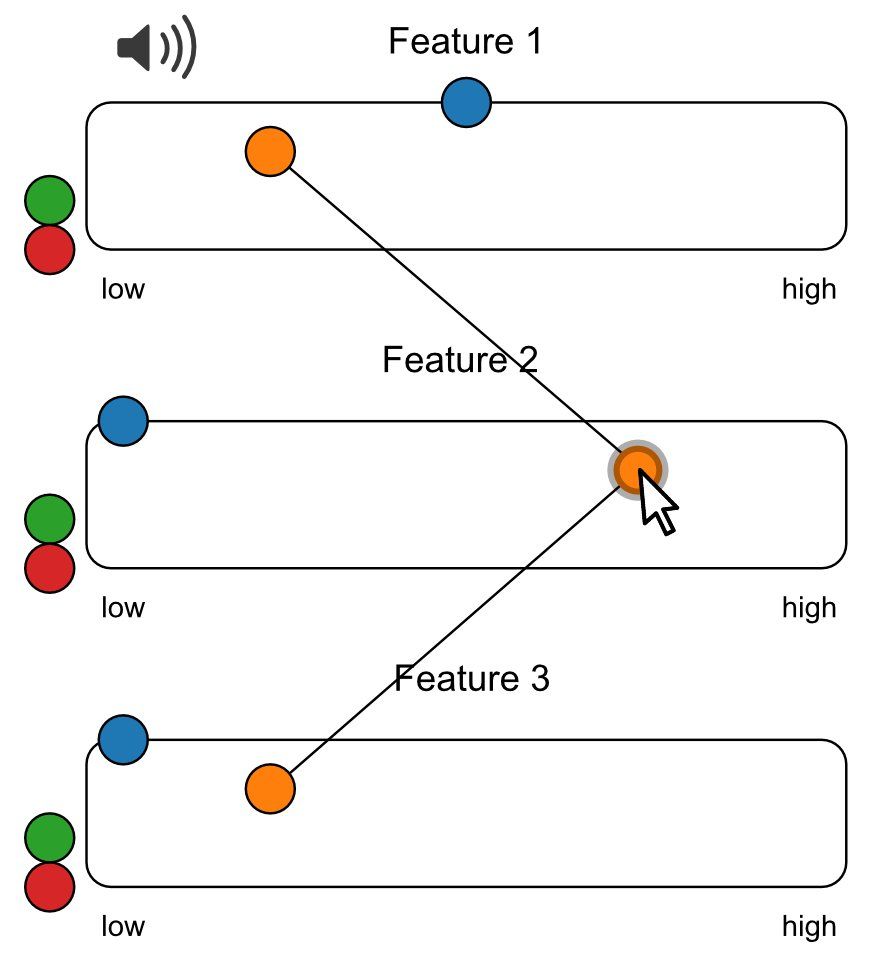
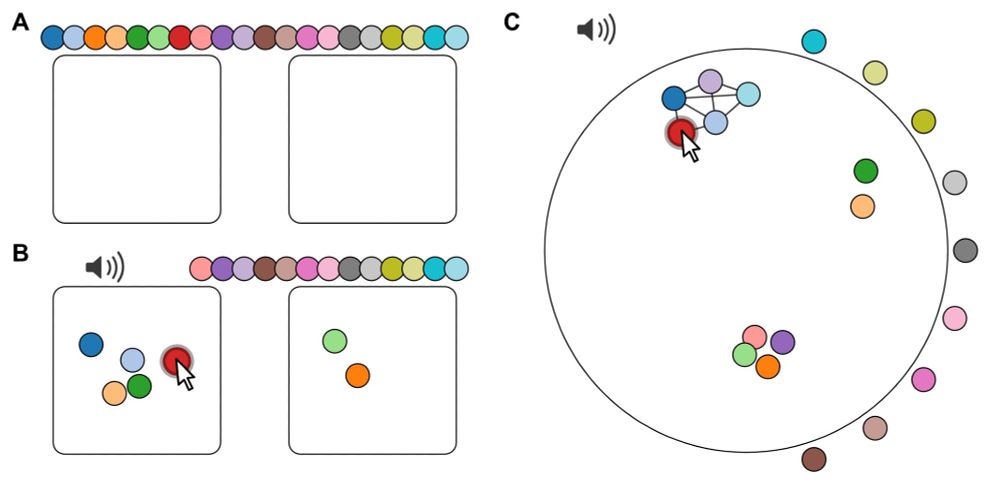
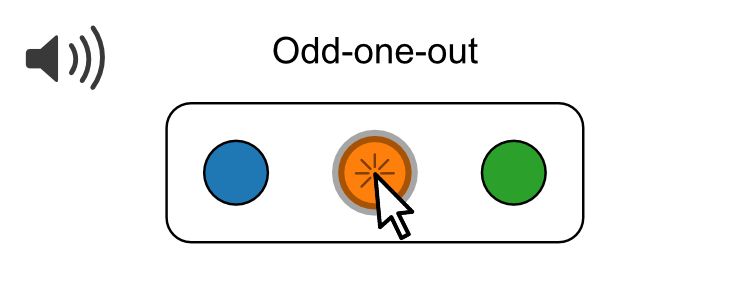
This way online participants can rate samples on multiple features, sort them into fixed or flexible number of clusters, or judge their similarity
13.12.2024 14:57 — 👍 0 🔁 0 💬 1 📌 0